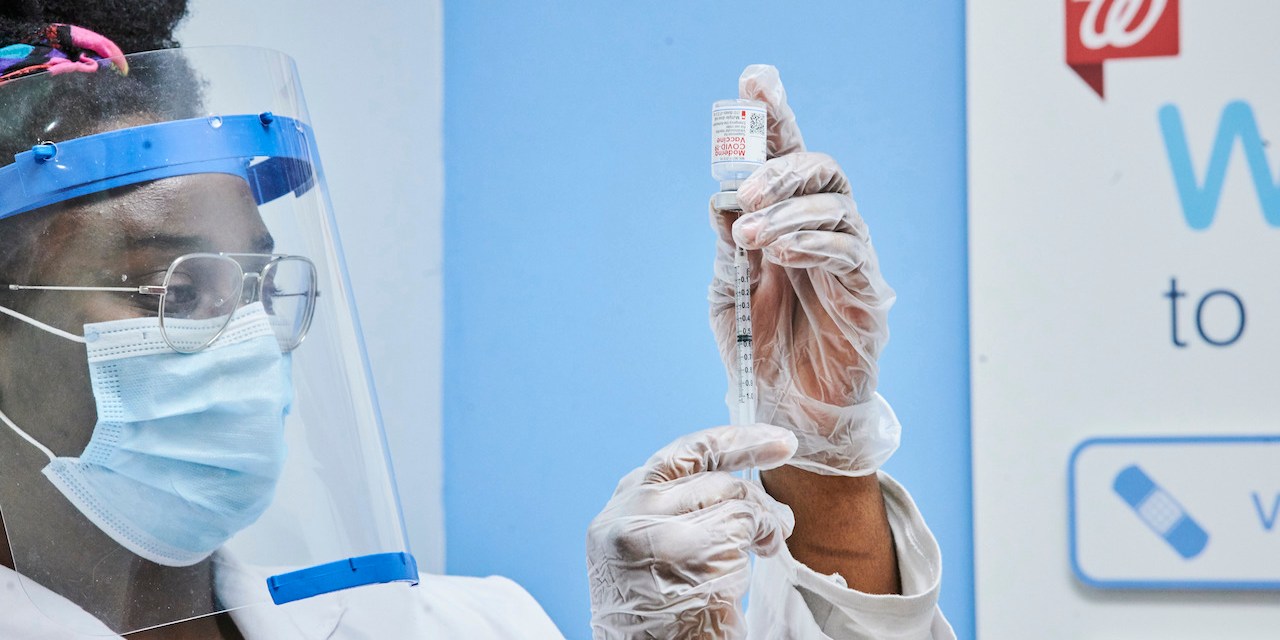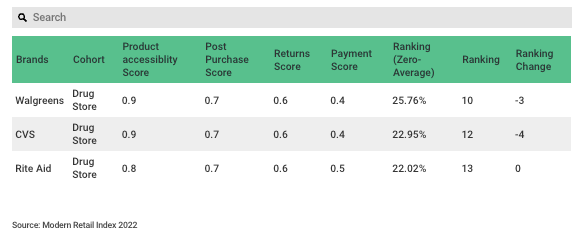Research Briefing: What’s next for drug stores?

In this edition of the weekly briefing, we share newly released data from Modern Retail+ Research that focuses on drugstore retailers.
Interested in sharing your perspectives on the future of retail, technology and marketing?
Apply to join the Modern Retail research panel.
Drug store bankruptcy shakes the industry
Breaking News: Bankruptcy has caused several large retailers to close brick and mortar locations this year, including Bed Bath & Beyond and Party City. Most recently, Rite Aid has announced plans to close and sell 180 locations. While Rite Aid plans to close more stores, selling the 180 locations is part of its plans to offset costs during its restructuring period.
Questions: What is happening to drug stores’ financial performance? What trends are competitors riding to avoid bankruptcy?
Answers From Research:

In Modern Retail’s Index, Rite Aid ranked the lowest in the drug store cohort. According to tracking by Gravy Analytics, major drugstores like Walgreens, CVS and Rite Aid saw traffic slow going into 2022. And among the three retailers, only CVS saw an increase in year-over-year revenue and a positive operating income percentage, emphasizing the cohort’s return to Earth post Covid vaccines. As a result, CVS and Walgreens have started to make investments to diversify revenue streams, particularly in the healthcare category, leaving Rite Aid behind.
Currently, the trend for drugstores doubling down on prescriptions is to focus on local fulfillment, where the prescription product can be given to customers quickly while still allowing them the option of person-to-person interaction in case they would like to speak to a pharmacist. To navigate these and other new industry challenges, drugstores looked to reconfigure their approach to fulfillment sites. CVS has closed 300 retail locations and instead is focusing on upgrading and opening new, smaller HealthHub locations instead, which will focus primarily on fulfilling prescription orders. Along with standard delivery, these HealthHubs will also provide local coverage for customers who order or refill prescriptions online but want or need an in-person consultation.
Similarly, Walgreens has started to focus on fulfilling local prescriptions. Luke Rauch, svp and chief merchandising officer at Walgreens, said one benefit of the company’s localization fulfillment strategy for prescriptions is short delivery times. “It now means you can get it delivered to your house in under 30 minutes or you can order it online and have someone bring it out to your car in under 30 minutes,” Rauch said.
Want to learn more: Modern Retail+ Research’s report on Retailer Fulfillment Strategies examines how different retailer cohorts benchmark against each other in terms of fulfillment options.
READ MORE ABOUT RETAIL DISTRIBUTION
See research from all Digiday Media Brands:

